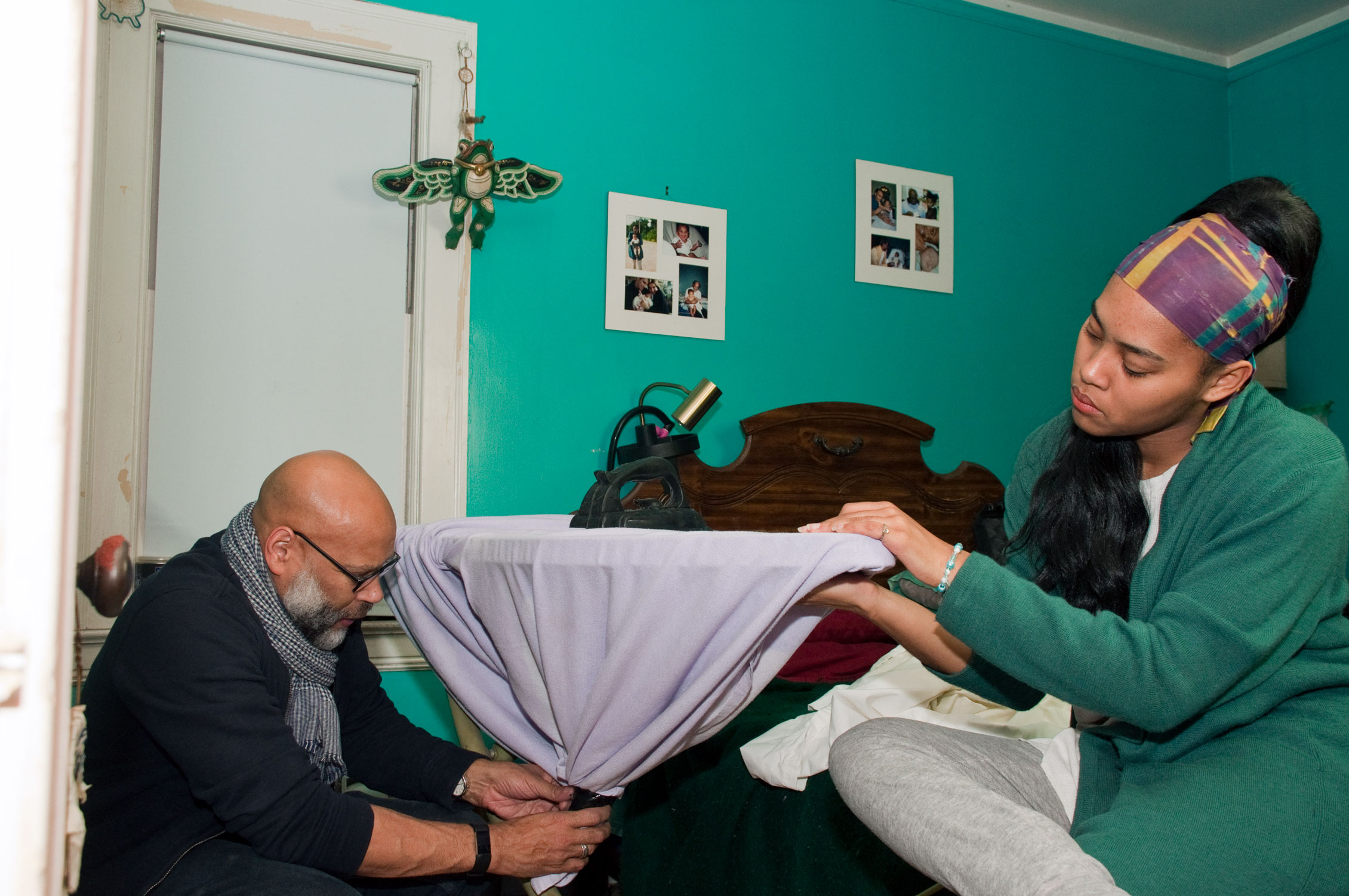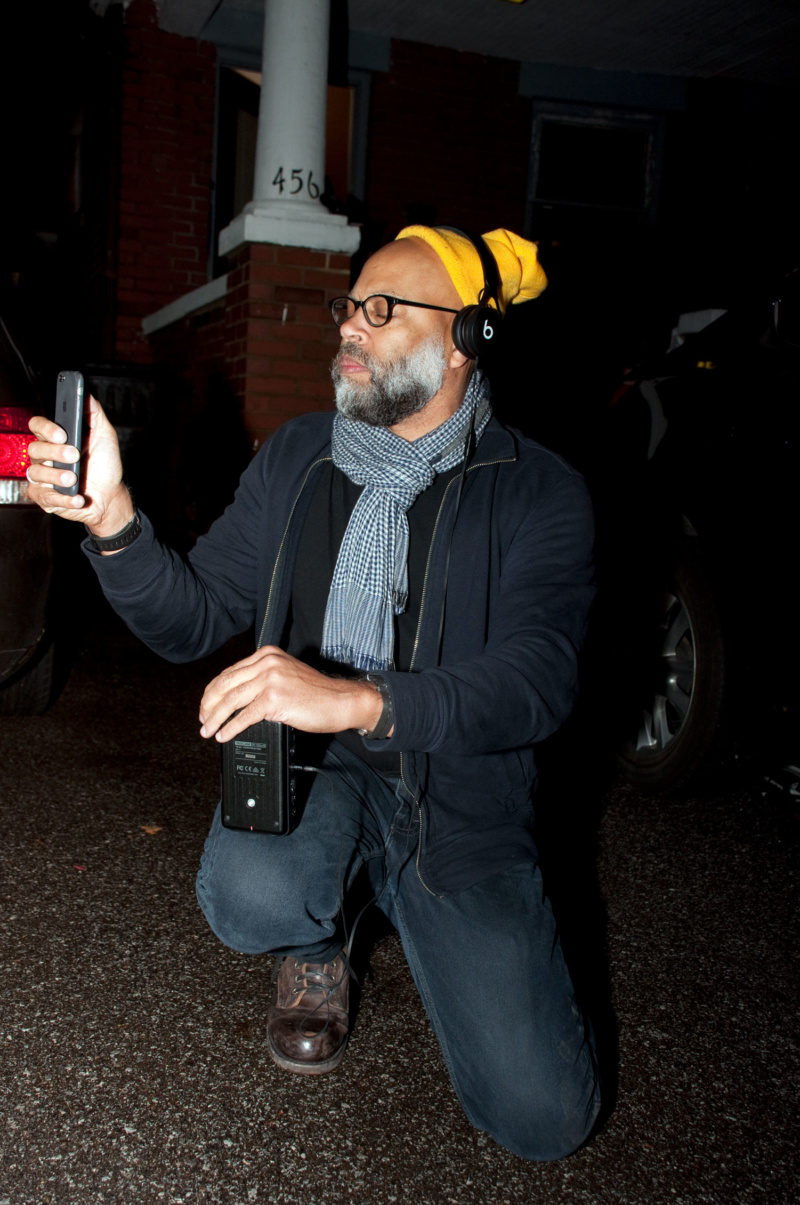
It is hard to stop watching Kevin Jerome Everson’s films. There are 160 in total, including nine features. The pace and voice of primarily African-American professionals from the dry-cleaning plant, the ranch, the bowling alley factory, the welterweight boxing ring, the city cab, the election precinct, are the lens through which viewers watch minutes pass. With films now in major museum collections throughout the United States and an upcoming solo exhibition at the Centre Pompidou, Everson’s earliest interactions with art-making took place at University of Akron, where he completed his BFA in photography and sculpture, one hour away from his birthplace in Mansfield. “Even one hour away, at that time, felt like forever away,” Everson says of his first departure from home. In Mansfield, his father worked as a mechanic, his mother as a bank teller and manager.
For the duration of the 57th Edition of The Carnegie International, on view until March 25, Everson’s 480-minute film plays in the sunken first floor of the museum. Park Lanes (2015) follows an eight-hour work shift in a bowling alley factory. A still camera records dripping, steaming mechanical parts hung out in the air to dry. To the untrained eye what would otherwise look like scrap pieces are the wooden innards to a bowling pin. Recognition of every bolt and stitch within an archaic workshop is the job description, the expertise, of the laborer. Park Lanes echoes an earlier film of Everson’s, Quality Control (2011), set in a dry cleaner in Prichard, Alabama. Long shots record the back-end of the dry-cleaning business: the bagging station, the steaming station, the ironing station—with high focus on such acts as pressing the cuff, the hem. Like many of his films, ambient conversation between employees speaks to the heart of the matter in the last lines: “It’s not only just pressing. It’s a lot of little small detail stuff that goes in quality.”
At 54 years old, Everson has been attuned to the places he’s lived for three decades; his films watch, with meticulous attention, the goings-on directly around him. Often, the Midwest and the South are the sites for his observational studies. The first location ideas for a portrait of Everson included points between Mansfield, Ohio and Columbus, Mississippi, the location where he awaits permission to shoot a film at an Air Force base. In the end, the portrait was scheduled for New Year’s Day in Cleveland, the site of Everson’s film Sound That (2014), where workers for the Cleveland Water Department listen for leaks in plumbing underneath the roads of a suburban neighborhood.

A number of people in Everson’s cinematic portraits wear headlamps. In R-15 (2017), the vignetted camera lens follows an employee into an attic while he investigates the heating and cooling insulation underneath the roof of a house. The camera autofocuses, blurring the image while trying to find a focal point in the dark. The headlamp scans an empty space, and points to searching as the subject of the film. What does work look like? What is the worker looking for? Investigations as old as time, Everson is a witness to this search.
“I don’t make work for the audience. I care about the subjects,” Everson tells me. Shot in real time, the duration of labor is felt and becomes an emotional clock. An expanse of time encourages the mind to wander in search of an identification with the mind of the employee, whose secret thoughts lay behind silent tinkering. Odd jobs are set up against daydreams.
Everson recounts that on long drives in and out of Ohio, he prefers to listen to the voice of a speaker on a podcast rather than music. Finding voice is another subject of Everson’s films. Ear, Nose and Throat and Shadeena (both 2016) form a double-perspective about coming clean and the process of confession, through the star of both: Shadeena. In a voiceover during an ear, nose and throat check-up, Shadeena confesses to seeing a murder outside her home. In the companion film, Shadeena, she retells the story straight to the camera in a single take. Her reticence is gone, her character markedly different from one film to the next, reiterating the construction of the confession and of all storytelling. With a direct look into the camera, she speaks with her eyes. She speaks to the power of the eye-witness. She has the final word.










 in your life?
in your life?

